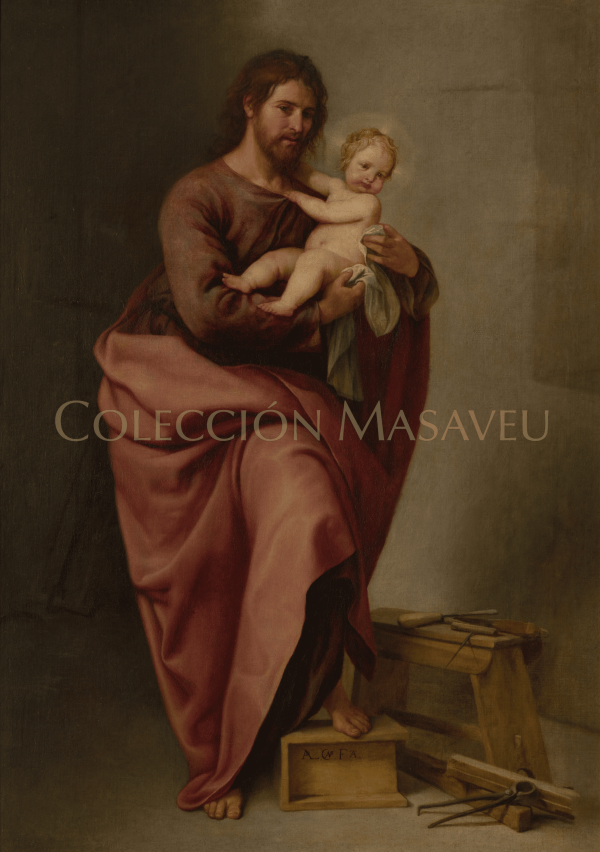Original work: Saint Joseph and the Christ Child. Author: Cano, Alonso (Granada, 1601-1667). Owned by: Masaveu Collection. © of the reproduction/photograph: Fundación María Cristina Masaveu Peterson.
19 November 2024 to 2 March 2025

Original work: Saint Joseph and the Christ Child. Author: Cano, Alonso (Granada, 1601-1667). Owned by: Masaveu Collection. © of the reproduction/photograph: Fundación María Cristina Masaveu Peterson.
Organised by: Museo Nacional del Prado
Curator: Manuel Arias
Works from the Masaveu Collection lent for the exhibition: Saint Joseph and the Christ Child, about 1645-46. Author: Cano, Alonso (Granada, 1601-1667). Owner: Colección Masaveu.
Organised by the Museo Nacional del Prado with the support of Fundación AXA, the exhibition whose English title was «Hand in Hand: Sculpture and Colour in the Spanish Golden Age» reflected on the success of Baroque polychrome sculpture and its symbiosis with painting in a spectacular display of nearly one hundred sculptures made by great masters like Gaspar Becerra, Alonso Berruguete, Gregorio Fernández, Damián Forment, Juan de Juni, Francisco Salzillo, Juan Martínez Montañés and Luisa Roldán. These works were accompanied by paintings and engravings that emulate or imitate them, like mirror images, as well as classical works which recalled the importance of colour in sculpture since antiquity.
Featuring a combination of paintings, drawings and sculptures, mostly from the Prado’s own collection but also from other institutions, the show was divided into seven sections. The canvas loaned by the Masaveu Collection, Alonso Cano’s Saint Joseph and the Christ Child, was included in the third area: “Divine and Human Craftsmen and Intermediaries.” This wellknown painting shows the saint standing and surrounded by the tools of his trade, with little Jesus in his arms. Acquired by Pedro Masaveu Masaveu in 1959, the piece originally hung over the altar of the church of San Ginés in Madrid, and art historians consider it one of the loveliest, most delicate works in Cano’s oeuvre. It enjoyed immense popularity in Madrid until well into the eighteenth century and inspired numerous copies and versions. It was included in the exhibition for two main reasons: because it depicts Joseph with woodworking tools, as a divine craftsman, and because the Prado owns the copperplate matrix and print of this canvas, which served to illustrate the complete sequence of its circulation and fate.